Video Transcription:
Catastrophe for Sale | Planet Finance Documentary - Optimized Transcription:
1990s: Capital was king or queen. You called the shots. But now capital is a burden. I estimate that globally there's roughly 10 to 20 trillion dollars in excess capital that has no useful home, no place to go. It's just roaming the world searching for a use. For those who possess that capital, it's a little bit of a nightmare. So, it can kind of make up its own opportunities, or it can allow crazy financial opportunities to rise solely to put that money to work.
There is a world made up of numbers, a world where you have to be the smartest or the fastest. [Music] Acted by radio waves and fiber optic cables, a world where you can make money if you think you know what the future holds, a world of fear, desire, where you can win or lose. I call this world Planet Finance.
Wandering around Planet Finance, I arrive at a place where they really love risk. Here they speculate on the chance of a wildfire, flood, or other catastrophe happening. You want to try going from there? Come on, boys, let's go.
This man lives off disasters. I married while I was in college and I started my family while I was doing my PhD. My first child, he cost the insurance company half a million dollars being born prematurely. And so the person at the insurance company told me, "Your next child won't be covered." Someone whispered to me, and they said, "Hey, go to Wall Street. You know a lot of math. They'll give you health care just for solving one equation." So in the first interview, the person comes in, he said, "John, does money motivate you?" And he went on and on for a 10 or 15-minute speech that culminated almost, "Do you worship at the altar of money? Does money mean more to you than anything else on this planet?" etc., etc. I was like, "Wow, this is a very long speech." So, I waited for him to finish, and I said, "No." Then why are you here? I said, "Oh, I just need health insurance, and I'll do anything you've asked me to do." That was my start, and that led directly and eventually to my getting a phone call from Lehman Brothers one day for catastrophe bonds. I said, "Oh, wow, okay. So, I have no experience in that." And he said, "That's the great thing. Nobody does."
On Planet Finance, there is a market for nearly everything, even for a future disaster, a disaster that hasn't happened yet, a disaster that might never happen. There are people who spend all their time calculating the minimum chance of such a disaster happening, and above all, the extent of the damage. [Music] What is a crisis or a catastrophe or a hurricane? What happens is it causes chaos, and chaos is the breakdown of typical systems, and it's this feeling of you normally walk around, you're like, "I know the subway is going to come at this time. I know that I have to go to work at nine. I have to leave by five, and to go to the grocery store." And then a crisis hits, and none of that is known anymore. Suddenly, it's all in the world of unknown.
To show you how such a chaotic situation can give rise to a market, I will take you back to a dark Autumn night in 2011.
Hurricane Sandy reaches the shores of New York. A state of emergency is declared, and all traffic comes to a standstill. The South part of Manhattan is flooded, and power goes out. The next morning, the extent of the damage becomes clear, and even Wall Street is forced to close trading for two days, a rarity. The last time that happened was after 9/11. The aftermath is a process of how do you go from chaos back to understanding or back to some sort of stability. It's not going to be the same as it was before, but hopefully a little bit more stable than than uh than that moment of chaos. The storm leaves New York with 43 dead and billions of dollars of damage.
Every human being is constantly making their own personal assessments on how to deal with the risks of life. John was up on the mountain by himself. His son had left, his daughter had left, everybody was gone except for John. All the neighbors left; John was the only one who stayed. There was one night when John was the only one up there. He's also kind of this patriarch of our community, a really well-respected elder, I would call him. So, I felt the need that I needed to go up just to help John if help was needed.
When disaster suddenly strikes, you can freeze, flee, or fight. Most of us, even though we're hermits, just kind of, were like, "Okay, the government's gonna handle it, let's get out of the way." And then when John Lingaman decided to stay, and he let us all know that nobody was here, you know, it's kind of like that age-old story, like no one's coming to save you.
But we kept getting refused by the police, and so we ended up sneaking up here. I'm so curious about that sheriff; we rarely, rarely get cops up here just because, you know, why patrol? We're not super interesting.
To start, we'll be revisiting some notable, many miles away. John So and his team are trying to calculate the possible damage of the wildfires to see if any triggers could be activated. The Tabs Fire from 2017, Campfire from 2018, and the Santa Cruz Landing Fire from 2020. So then let me see here where the property counts there. The actual property counts are there in line six. You obviously see in green the fire perimeter for the Santa Cruz Fire, the CCU Fire, what's Hungry? That's the fire perimeter. I'm going to turn on and off toggle on and off. Okay, and could you create a different color for that? Yes, make it red. Yeah, okay. So, you know what you see is a bunch of yellow dots, and each of those dots represents properties in and around, in this case, this Santa Cruz County. We know what resources are we at the very beginning of that event, we tested a new satellite imagery processing technique to try to predict what the losses of that fire would be. But would you say the burn ratio in those areas, total number of structures versus, you know, it will be quite... it'll be high, yes, yeah. So that's what would be interesting to find out because now you're basically coming up with a resource kind of a dependent view on what the burn ratio is going to be, yeah, which I like. Wildfires are very common and they are relatively straightforward events. You have ignition, you have burn, and then you have damage. So where most people actually think that the greatest uncertainty lies is in the damage itself. If you burn a certain area, then how many of the homes are destroyed? And there is some uncertainty in there, but there's surprising patterns in that, maybe those patterns can be recognized in the data. But I wonder what good those calculations are to you when the fire is coming your way.
Now, I know how bad it would get. All night long, I would go up to the top of our property. And during the night, I kept hearing these explosions that I thought were the propane tanks. I mean, it was a boom, you know? And ouch, was falling on me, but it was still a tiny breeze on the back of my neck. The little breeze is actually blowing the fire slightly away from us. In the morning, it came over the ridge, and then I could see trees flaring up. I was walking around, and I guess, partially because my daughter was emotionally... she was tweeting and calling people, telling them to get me out of here. It was a very surreal experience. Rodents, mice, and rats literally, like, running through your legs, just fleeing the fire. And then the butterflies, a lot of Monarch butterflies were just... they were just landing on me in the woods. And they didn't seem... I mean, how can you read a butterfly's personality? But they didn't seem panicked, you know, the way a butterfly is just so light in the way they live it seems like. And so, they're just kind of cruising along, and they would land, and then they would move on. But there was a lot more than I have ever seen in the woods, and obviously, they were just moving away from the danger. They don't have necessarily decent roads coming in, going out. Cal Fire won't be able to reach there, so the burn ratio is going to be 60. Should, yeah.
The fire was finally starting to come around and approach us. No, I don't know. I think I realized probably on the second day of fighting the fire that we were going to control it as long as the weather didn't change. The information was so poor from social media and their iPhones. They were seeing pictures of that very aggressive fire. And so, from social media, there was these satellite images that showed what they said were hot spots of where it was burning and where it wasn't. So, you would kind of an overlay of the topography of the land, and it just had a bunch of dots, the red dots where it was really hot, orange wasn't as hot, yellow maybe it had already burned, and then green was okay. And when you looked at it, it showed red dots all over our house and all over our neighborhood. People were hyper-focused on this image, and they're just like, "It's burning right here." And then we would get texts from them, say from people in town, saying, "It's burning on Back Ranch Road, you need to go check it out, you need to get out, it's your only way." And we go out to Back Ranch Road, and there was no fire. And we'd say, "There's no way it's burning on Back Ranch." So, we can see the fire, it's right here. And then we would tell them, and then, "No, it's burning on Warren Drive, you need to go get out." And then we go look, and be like, "No, it's not burning there either." And it wasn't until I think probably three or four days in, we realized that the satellite image was transposed improperly, it needed to shift east by about a mile or so.
Alright, the fire went around, it came up the back side, and all of a sudden, we got a desperate hollering. There was a draw there, it had come up, and it caught one of his outbuildings on fire. By the time I got up there, it had taken off, it was really burning. We weren't going to stop him; it literally sounded like some jet plane preparing to take off. And that's when I decided to flee.
And with those bulldozers, the Bonnie Dune residents create a wall, a firebreak between themselves and the approaching flames. It almost looks like that upper left lobe, you have a look to the left there, yeah, that low right there, that looks like they were the ones that actually successfully built a perimeter. So, I'm going to zoom in on that and actually see if I
can see... the human behavior is a fundamental part of the modeling, it's actually already taking into account that there's millions of sometimes very stubborn and independent, especially here in the US, homeowners who are defying orders to leave and evacuate, running around, you know, putting up boards over their windows and defending their homes. If it weren't for that behavior, then the losses would easily be double or triple what we're observing. So, it's actually, in a sense, priced in this human behavior, right? So, John So has already factored in this behavior of large groups of people. But what about the behavior of a single individual? Because whether our village elder can be insured against wildfires is decided today by algorithms.
In New York, a fintech startup is confident that it can calculate the risk of a wildfire down to the smallest detail and therefore determine whether something is insurable or not. In the first version of our model, didn't really take into account the randomness of lightning, so it didn't really consider lightning as a major variable. So, when the reason we exist is because the old way of doing things isn't really working anymore, the traditional way of understanding risk is, let's look at this spot on the map, the zip code, and we look and say, "Okay, over the last 500 years, this has burned five times, so it has a one in one hundred chance of burning." And then you price it accordingly. The problem is, it's right there in the word climate change. You see it right here, negative four is extreme drought, right? Negative three is just... So, you can't really use the last 500 years and expect to be able to predict the next 10 years off of that. You have to do a much more bottom-up physical model using machine learning, looking at the reality of that place. Now, this is what the trees look like, this is what the weather looks like, this is where the fire breaks are. This is how close the closest fire engines are, and all that's being done by the model, the AI model. So, to give you an idea, the traditional way of doing it, they might run a hundred thousand simulations to get to that one in one hundred number. They might say, "Run a hundred thousand different simulations and say, okay, I think that this has a one in one hundred chance of burning." Where our machine learning models, our models, they're running 682 billion simulations.
To build a well-functioning AI model out of 682 billion simulations, you need all kinds of things. I'm losing money, I don't know how to model this anymore, the models aren't working, I'm going to leave, I'm just... I'm not going to do this anymore. First of all, you need investors' money, where else can you go with it, but also brains with a background on Wall Street. I started my career at Goldman Sachs, and I'm a doctor as well, a climate scientist, a mathematician. The probability that a fire will spread to a grid in California, and the founders who zealously promote their AI model, there are significant alphas that we could fishery, as we've seen. They all say, "All right, we have no idea what the future is going to look like. There's a far more measured and data-driven approach that we can really take towards it." A lot of the traditional finances, so places like pension funds and hedge funds and family offices looked over and said, "Well, here's this whole world that's writing insurance policies. It's not focused at all on the stock market or commodities or something like that. They're just focused on whether or not a hurricane happens, an earthquake happens, or, you know, wildfire happens." And why that's so valuable is because it's a non-correlated asset. And what I mean by that is, the stock market can be doing whatever it is today, that's almost completely unrelated to whether or not the wind is blowing in Florida and there's a hurricane happening. And one of the best things you can have as an investor is something that's non-correlated, because even if you think you're diversified in your portfolio, but it's all in the stock market, well, if the stock market blows up tomorrow, then everything's going to go down. So, the appeal of a cat bond is that it's a completely different type of risk. Even if Wall Street crashes tomorrow, the cat bond will still bear high-interest rates.
To get people water, we work on water wells and repairing water wells. Virtually every water well out here melted; fire came through there very fast and very hot. Very different than the fire that we dealt with at our home. Sorry for the dirty windshield, it's only going to get dirtier today. It used to be you couldn't see any of this. This was all trees. That was a house there, there was a house right here. That one survived.
One gentleman died out here. He was an elderly guy who went back in to get stuff, from what I heard, and he didn't make it out. He tried to hike out through the state park, and he didn't make it. They found him, some of the neighbors found him.
There is nothing of value left. But when lightning strikes a bone-dry forest, or when a hurricane is on its way to the coast and the extent of the insured damage isn't clear yet, that's when John So swings into action. Whether it's a hurricane, wildfires, or an earthquake that just happens in the middle of the night, I get a phone call, and I'm woken up. We have software and tools in which we bring up our portfolio and immediately access the impact to the portfolio from the event. So, if I zoom in, if it looks like a trigger is activated and as an investor, you could lose all your money, then you naturally want to get rid of your cat bond as soon as possible by putting it up for sale. That's when interesting opportunities arise. If you're not able to estimate the losses of a live event like this, then you have to question your ability to estimate the risks, hypothetical risks, to this bond, and pricing it. So, it's a little bit like a Formula One race. Worldwide, very few players have the knowledge, computing power, and reaction speed necessary to play the game at this level. Just before the fire, and then as soon as possible, I wonder whether that will be a typical catastrophe bond portfolio will have
roughly 200 positions in it. What do you mean? We'll have 200 different catastrophe bonds in it. These databases and so, in a major event, roughly 80 of those are potentially exposed to the event. That narrows it down from 200 to 80. And then we are immediately estimating what the intensity of the event is going to be and, therefore, what the financial losses will be. And then from that, the next cut, the 80 bonds that are at risk, suddenly narrows down to 10. So, that final list of bonds that are potentially at risk, the seller really just wants to sell. A lot of media attention, like a hot potato. No one wants to burn their fingers on these cat bonds. They're now being resold for less and less money. The market maker will call us and say, "I've got an offer on 5 million of this bond at 60 cents on the dollar." So, normally, if the bond was not in trouble, it would trade at full value, a hundred cents on the dollar. That it's offered at 60 cents on the dollar. So, if John So thinks he is better informed than the rest of the market, and he is sure that the trigger won't be activated and he won't lose millions, then he can seize his opportunity and buy a cat bond for a bargain price.
It's a tricky business because roughly every other year, you have a catastrophe bond that loses money. And I've been doing this for over 20 years, so we've lost a lot of money on those. Cumulatively, we've made more than we've lost on that. But we've had significant loss experiences for sure. So, if a cat bond is really triggered, you lose a lot of money as an investor. Therefore, John has to constantly test the most recent climate projections against his own data and calculate the extent of the potential damage of those projections. So, here are the different end-of-century temperature projections. So, obviously, the 8.5 scenario is the highest. Okay, so two degrees by 2050, 4.5, 4.0, etc. And we tweak those historical storms and ran it through their model. And on average, that increases by 3.1.3, 4, so 3.4, one. It's a 3.4% increase in damage, right? And damage. And what do you do? Oh, that's annualized. And then you annualize it from today or from 2020. Oh, okay. The world is getting riskier, for sure. So, that is driving growth in our marketplace by our estimation. The world needs roughly 500 billion of catastrophe bond finance. Largely, it's for the time being a U.S.-centered market, but the potential worldwide is immense. You know, whether it's flooding in Germany, flooding in Asia, particularly in China, you can calculate what the exposure is because in the end, it's physical. So, really, you need effectively Google Earth and to look at all the property around the world and understand its vulnerability to earthquakes, hurricanes, and floods. And you can do the calculation, right?
But what is the bottom line for the people of Bonnie Dune? There are a lot of people up here. It was a huge surprise to them that the firemen didn't come. I think it really is a numbers game on people and then the amount of wealth within an entire community. So, you know, we might have some affluent community members, but it's not Silicon Valley or, you know, it's not all affluent community. So, it's not worth it for them. I think it must be, how close it is to a city that, you know, that they care about. For most of my community, it was the first time that they realized that they were not significant and that they were deemed easily disposable. Not significant, disposable. The fire department wasn't willing or able to save many of the houses. So, cat bonds at Bonnie Dune, no one noticed their existence. They only work for you if you own insurable property. Yes, soon, that's Chance Road. Last chance, last chance. This still shows us like our extremely high risk. We see that historically, this place has burned in the past. So, actual model shows that this Bonnie Dune location is like a 1.18 chance of burning. So, that's actually within 95 percentile in terms of the risk. Yeah. So, 95% of California has lower risk than this particular location. The distance to wildland and urban interface is too close, and then the Palmer Drought Severity Index is too low. And those are the reasons behind we think this location is actually too dangerous for us to ensure. So, this is my little bunker. I've got four compressed air bottles that are full of air. I'm never going to... If I stay in here, I could stay in here hours with those tanks with no outside air, but my house would be burnt down and I've got to come out of this as soon as that big wave burns over. I've got to be out there putting out the fires. But anyway, this is just a little... There's a little insurance policy is what it is. You know, I doubt 90% of the time, I'm never going to use this, but if that one, two, five percent of the time I need it, it could save my life. So, that's why I got the compressed air tanks and the water. And it also gives our loved ones the insurance or the feeling that, "Oh yeah, Grandpa's got it together. He'll get in his little pizza oven and sit there and eat pizza," you know. So, yeah. And I've got hoses, and I've got a little can of gas there. So, I'm ready. The people of Bonnie Dune ensure their own lives and rebuild them if they need to. Because if you live in Bonnie Dune or by the Mississippi River or in Pakistan, you'd better build your own bunker or levee. If there's anything I've learned, it is hard to calculate the risk of a war, a pandemic, or climate change. Yet, on Planet Finance, even this kind of risk is a good business model because the capital that's roaming the world is always looking for a way, creating new arenas for profit. You could call it perverse, but for a few years now, the demand for cat bonds actually exceeds the expected catastrophes.

























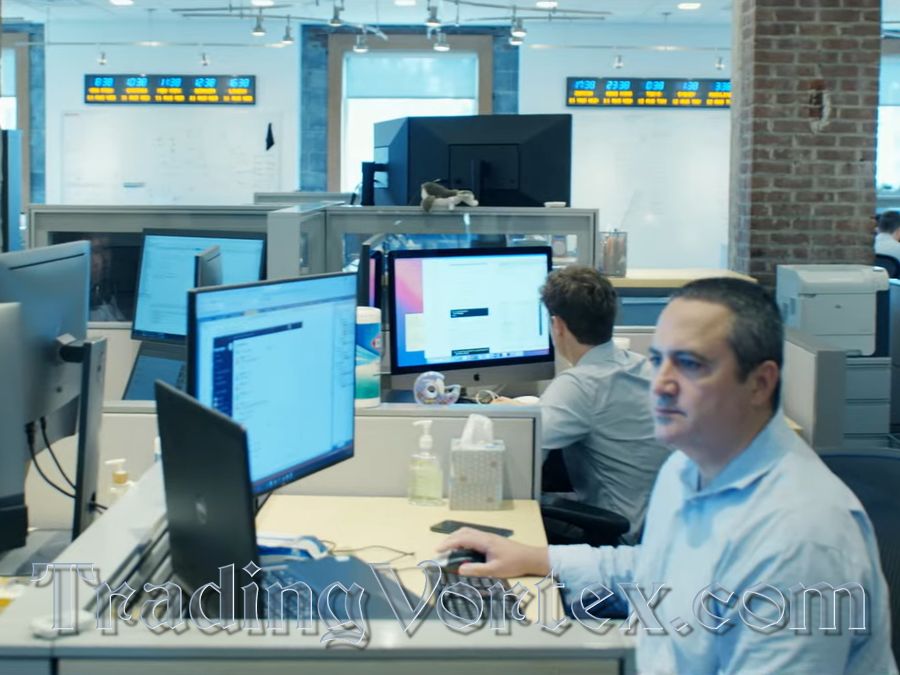

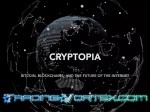

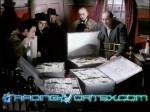

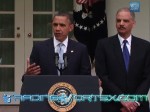
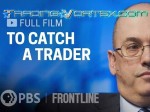
 TradingVortex.com® 2019 © All Rights Reserved.
TradingVortex.com® 2019 © All Rights Reserved.